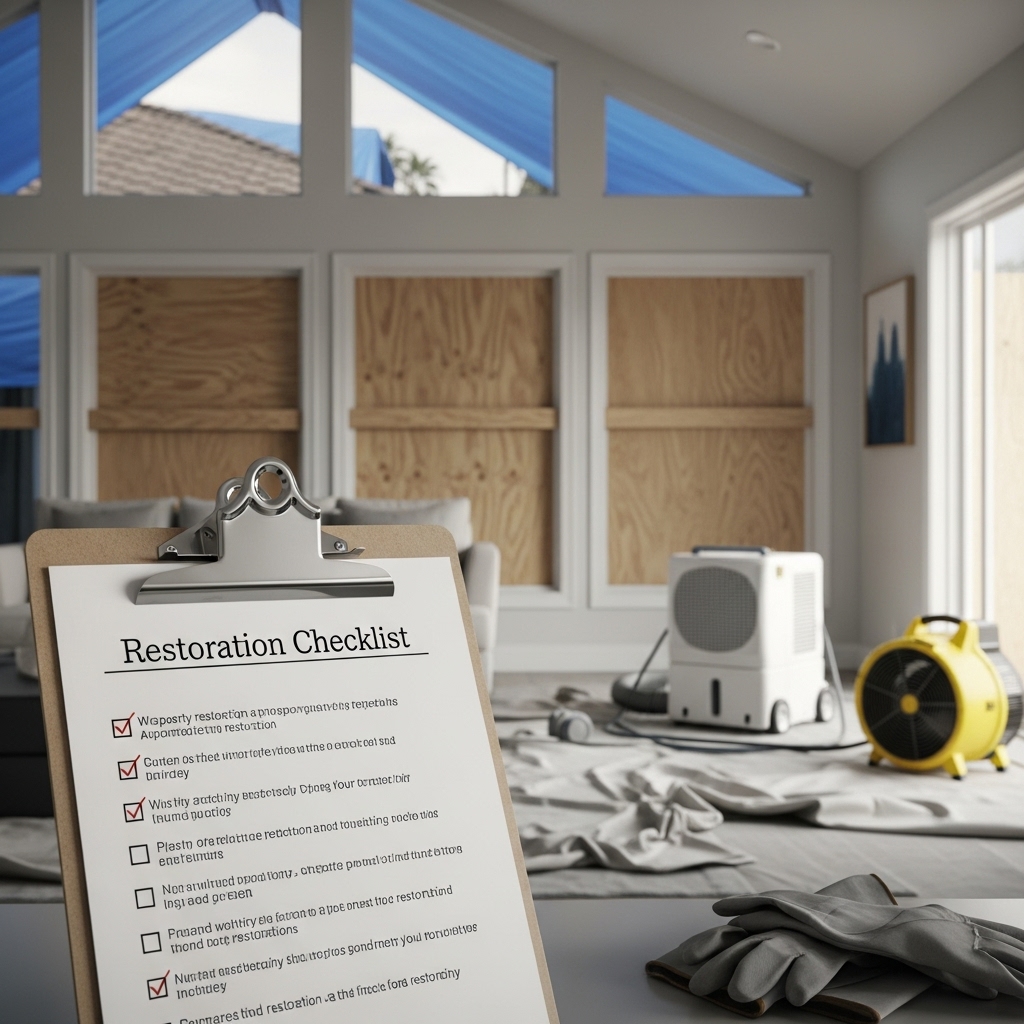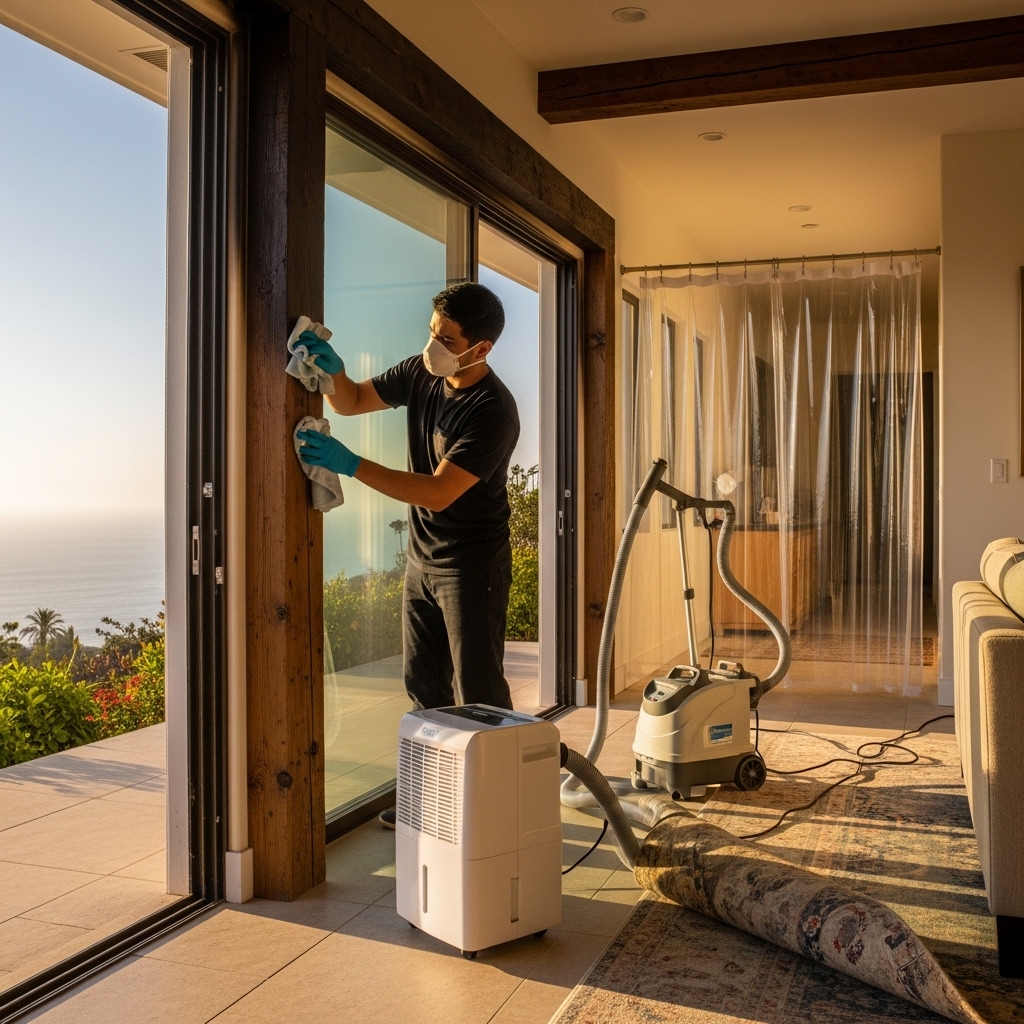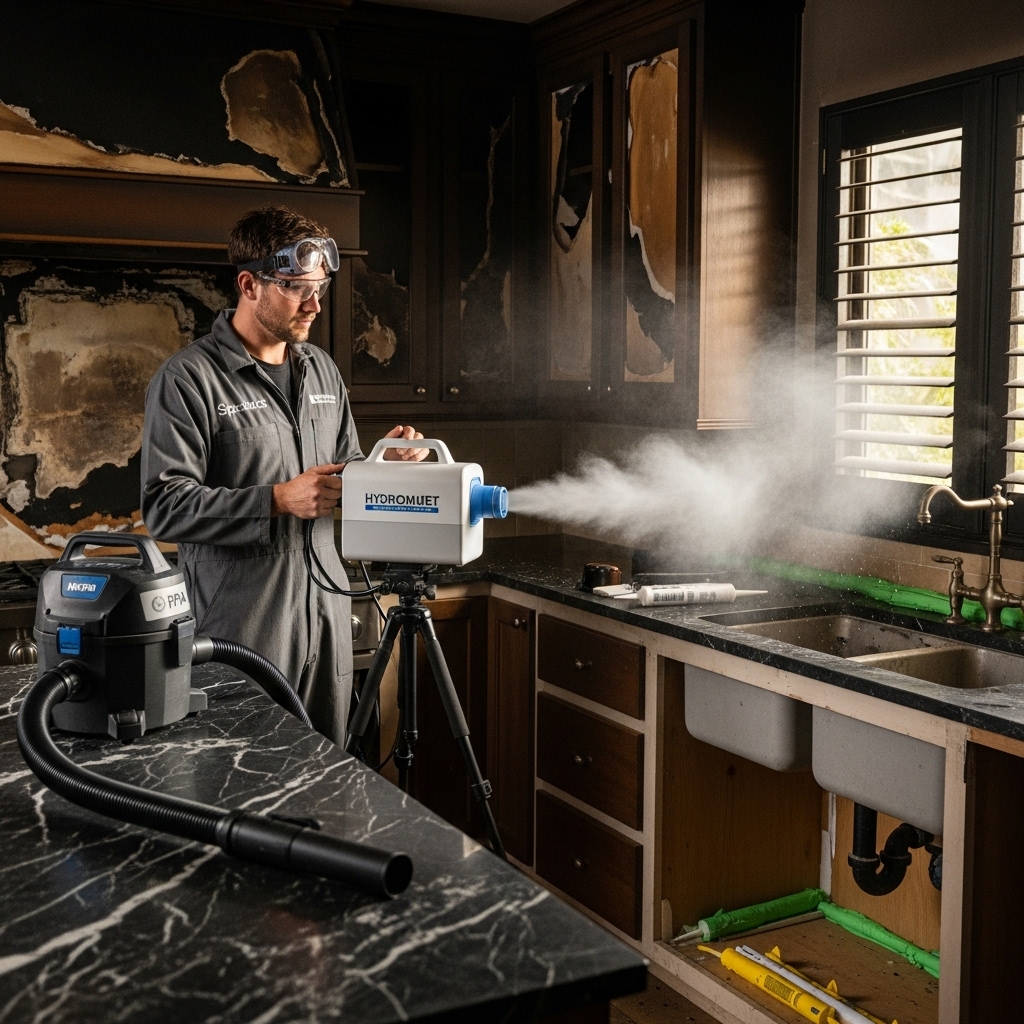After a fire, having a clear, actionable checklist helps you move from shock to progress. This guide for Malibu, California homeowners breaks restoration into manageable tasks you can follow step by step. Because coastal humidity and seasonal storms influence drying and repairs, the checklist accounts for local conditions while emphasizing safety, documentation, and methodical cleanup. If you choose to bring in experts, understanding what comprehensive fire damage restoration includes will help you decide which tasks to handle yourself and which to assign to professionals.
Every fire loss is unique, and the order of some steps may shift based on the areas affected and the types of materials burned. Use the following checklist as a living document: adapt it as you learn more from inspections, your insurance adjuster, and the evolving condition of your home.
Immediate Safety and Property Stabilization
- Wait for official clearance before reentering the home. Wear sturdy shoes, gloves, and a respirator rated for particulates.
- Shut off utilities if they are not already disconnected; arrange inspections for electrical, gas, and water systems before restoration.
- Secure the property: board up broken windows and doors, tarp roof openings, and fence off hazardous areas.
- Set up ventilation by opening windows and doors when weather allows; avoid running HVAC until inspected.
- Establish a clean staging area for supplies and a separate sorting area for contents to prevent cross-contamination.
Documentation and Communication
- Photograph every room from multiple angles, including close-ups of damaged items and building materials.
- Create an inventory list with descriptions, approximate ages, and serial numbers where applicable.
- Start a daily log with actions taken, equipment used, and moisture readings; keep receipts for all expenses.
- Notify your insurer, review policy coverages, and ask about requirements for estimates and specialty cleaning.
- Coordinate schedules and expectations with any contractors you plan to hire.
Water Extraction and Drying
- Remove standing water using pumps and wet vacuums; mop residual water from hard surfaces.
- Pull baseboards and create weep holes if needed to vent moisture from wall cavities.
- Deploy dehumidifiers and air movers in a balanced configuration to encourage even drying without spreading soot.
- Lift carpet edges; discard saturated padding and evaluate subfloors for moisture and damage.
- Monitor humidity and moisture content daily with meters; adjust equipment until readings normalize.
Soot and Smoke Residue Removal
- Perform HEPA vacuuming on ceilings, walls, and horizontal surfaces to remove loose soot.
- Use dry cleaning sponges on painted drywall and ceilings; replace sponges frequently.
- Wet clean semi-gloss and gloss surfaces with appropriate cleaners; test small areas first.
- Address protein-based residues in kitchens using degreasing agents designed for delicate finishes.
- Clean from the top down and from light damage to heavy to avoid smearing cleaned areas.
Contents Sorting, Packing, and Cleaning
- Establish categories: restore, evaluate professionally, and discard. Photograph items before moving them.
- Box and label contents by room and item type; keep a detailed inventory with condition notes.
- HEPA vacuum textiles and upholstery; launder washable fabrics with odor-targeted methods.
- Set aside electronics for evaluation; do not power them on until inspected.
- Use clean, dedicated tools and change gloves frequently to prevent recontamination.
Odor Control and Air Quality
- Clean thoroughly before deodorization; source removal is essential for long-term odor control.
- Replace HVAC filters and have ductwork evaluated if soot may have entered the system.
- Consider thermal fogging or hydroxyl generation for difficult odors; protect sensitive materials during treatment.
- Seal structural wood with smoke-blocking primers after cleaning and drying to lock in residual odor.
- Ventilate during and after treatments as recommended by product guidelines.
Structural Repairs and Finishes
- Inspect framing, sheathing, and fasteners; replace structurally compromised members.
- Coordinate electrical and plumbing repairs before closing walls or ceilings.
- Prime with stain- and odor-blocking products, then repaint and refinish as needed.
- Confirm moisture levels meet manufacturer specs before installing new flooring or cabinetry.
- Schedule final inspections as required by local codes in Malibu, California.
Coordination With Professionals
Not every step needs to be DIY. If the loss is extensive or involves heavy soot or water, consider partnering with experienced teams who bring industrial equipment and specialized methods. Review what complete fire damage restoration entails—assessments, containment, extraction, cleaning, deodorization, and repair coordination—so you can assign tasks strategically and stay within your comfort zone.
Preventing Secondary Damage
- Keep humidity under control; do not stop dehumidification too soon.
- Isolate affected rooms with plastic sheeting and maintain clean-to-dirty workflows.
- Change filters and vacuum bags frequently to maintain efficiency.
- Reinspect hidden spaces like closets and cabinet interiors for delayed staining or odor rebound.
Readiness for Future Emergencies
- Install and interconnect smoke alarms; test monthly and maintain batteries.
- Place fire extinguishers in the kitchen, garage, and workshop; learn proper usage.
- Develop and practice evacuation routes and meet-up points for every household member.
- Store important documents digitally and keep an emergency kit ready.
FAQs
Q: How long should I run dehumidifiers? A: Until moisture readings for building materials return to normal ranges and remain stable for at least 24 hours.
Q: Can I clean walls before photographing them? A: Take photos first. Documentation supports claims and helps track progress.
Q: What if odors persist after cleaning? A: Reevaluate for hidden residues, consider additional deodorization, and ensure HVAC components are clean.
Q: Are hardwood floors salvageable? A: Often, if drying begins quickly. Cupping may flatten with controlled drying; severe warping may require replacement.
Q: Is it safe to keep refrigerated food after a fire? A: If power was lost or smoke infiltrated the appliance, discarding perishable items is the safest choice.
Put Your Checklist Into Action
Following a clear checklist keeps your restoration organized and effective. Work methodically, confirm safety at each step, and document everything. If you want expert help with any phase—from moisture control to odor elimination—reach out to local specialists experienced in fire damage restoration who understand Malibu, California homes.


